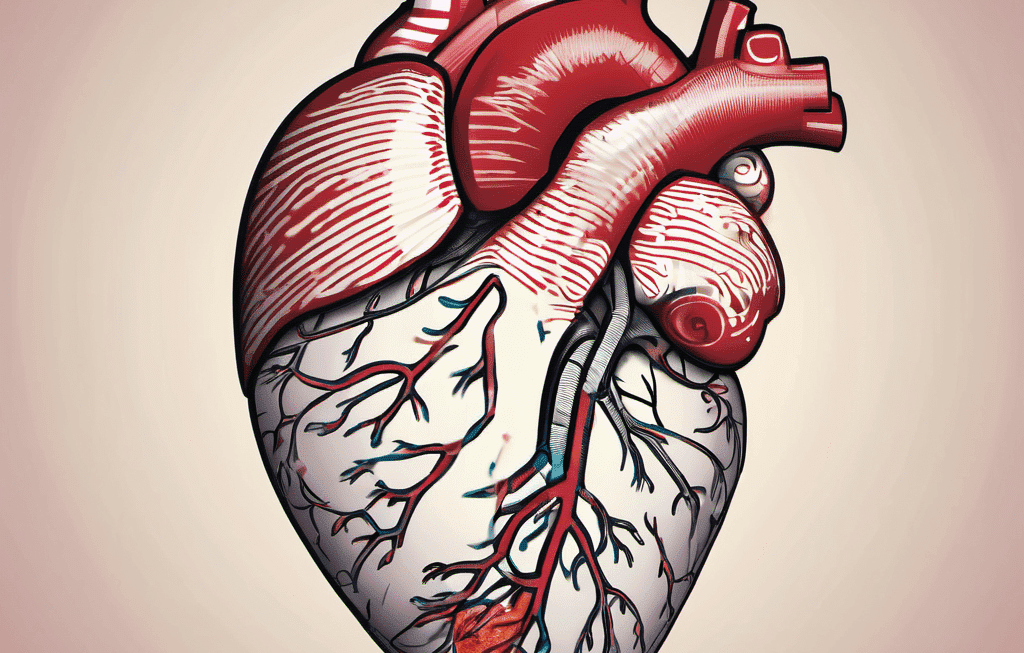Introduction:
Losing weight after pregnancy is a gradual process that requires a combination of healthy eating, regular exercise, and lifestyle changes. It’s important to approach post-pregnancy weight loss with patience and a focus on overall well-being. Here’s a detailed guide on how to lose weight after pregnancy:
Embarking on the journey of postpartum weight loss is a uniquely personal and transformative endeavor for new mothers. Beyond the immediate joys of childbirth, the desire to regain pre-pregnancy fitness often takes center stage. In this guide, we delve into the nuanced landscape of postpartum weight loss, providing evidence-based insights and practical strategies to assist mothers in achieving their fitness goals while prioritizing their overall well-being. From understanding the physiological changes post-pregnancy to embracing sustainable dietary habits and incorporating safe exercise routines, this comprehensive resource seeks to empower and support women on their path to reclaiming a sense of balance and vitality after childbirth, reminding them that this journey is not only about shedding pounds but also about fostering self-love and resilience.
How much weight does a woman gain during pregnancy?
Weight gain during pregnancy varies from woman to woman and is influenced by factors such as pre-pregnancy weight, overall health, and individual metabolic rate. The Institute of Medicine provides general guidelines for recommended weight gain during pregnancy based on a woman’s pre-pregnancy body mass index (BMI).
Here are the general recommendations:
-
- Underweight (BMI less than 18.5): Recommended weight gain is between 28 to 40 pounds.
- Normal weight (BMI 18.5 to 24.9): Recommended weight gain is between 25 to 35 pounds.
- Overweight (BMI 25 to 29.9): Recommended weight gain is between 15 to 25 pounds.
- Obese (BMI 30 or greater): Recommended weight gain is between 11 to 20 pounds.
These guidelines aim to ensure the health of both the mother and the baby. It’s important to note that the weight gained during pregnancy includes the baby, placenta, amniotic fluid, increased blood volume, breast tissue, and extra fluid retained in the body. Additionally, women may gain weight differently during each trimester, with a more gradual increase in the first trimester and a steadier pace in the second and third trimesters.

Individual variations in weight gain can occur, and some women may gain more or less than the recommended amount. It’s essential for pregnant women to discuss their specific circumstances with their healthcare providers, who can provide personalized guidance based on their health and pregnancy progress. Monitoring weight gain is just one aspect of prenatal care, and overall health and well-being should be the primary focus during pregnancy.
Consult with Your Healthcare Provider:
Consulting with your healthcare provider is a crucial first step in any postpartum weight loss journey, ensuring a safe and personalized approach to achieving your fitness goals. Your healthcare provider possesses valuable insights into your unique medical history, potential complications from childbirth, and any underlying health conditions that may impact your weight loss efforts. Begin by scheduling a comprehensive postpartum check-up to discuss your health status and receive professional guidance tailored to your specific needs. Together, you can explore a realistic timeline for weight loss, taking into account factors such as your body’s recovery, breastfeeding considerations, and any potential restrictions on certain activities. Your healthcare provider can offer expert advice on setting realistic weight loss goals, adopting a balanced and nutritious diet, and designing an exercise plan that aligns with your postpartum recovery. Additionally, they can monitor your progress, addressing any concerns or adjustments needed along the way. This collaborative approach ensures that your weight loss journey is not only effective but also safe and supportive of your overall well-being. Always prioritize open communication with your healthcare provider to make informed decisions that contribute to a healthy and sustainable postpartum weight loss experience.

Set Realistic Goals:
Setting realistic goals is a fundamental aspect of any successful postpartum weight loss journey. The key is to approach this process with patience, understanding that your body has undergone significant changes during pregnancy and childbirth. Begin by acknowledging that postpartum weight loss is a gradual and individualized process. Consult with your healthcare provider to establish a realistic timeline based on your unique circumstances, considering factors such as your overall health, recovery from childbirth, and the demands of caring for a newborn.
When setting weight loss goals, focus on achievable and sustainable milestones rather than aiming for rapid results. Consider incorporating both short-term and long-term objectives that align with your lifestyle and priorities. This might involve losing a certain number of pounds over several months, gradually increasing physical activity, or adopting healthier eating habits. Additionally, celebrate non-scale victories, such as increased energy levels, improved mood, or enhanced fitness, to reinforce positive behavior.
It’s crucial to be flexible and adaptable with your goals, recognizing that the postpartum period can be unpredictable. Factors like sleep deprivation and the demands of motherhood may influence your ability to follow a rigid plan. Embrace self-compassion, understanding that progress may be slower at times, and setbacks are a natural part of the journey. Regularly reassess and adjust your goals as needed, taking into account both your physical and emotional well-being.
Lastly, involve your support system, whether it’s your partner, family, or friends, in your goal-setting process. Having a network of encouragement and understanding can contribute significantly to your motivation and success. By setting realistic, personalized goals and approaching your postpartum weight loss journey with patience and self-compassion, you can achieve lasting and positive changes for both your body and overall well-being.
Goals to lose weight after pregnancy:
Setting realistic and specific goals for postpartum weight loss involves considering various aspects of your lifestyle, health, and well-being.
Here are some detailed goals to consider:
-
- Gradual Weight Loss: Aim for a gradual and steady weight loss of around 1-2 pounds per week. This is a healthy and sustainable rate that is less likely to compromise your energy levels or nutritional status. Consult with your healthcare provider to determine a safe and realistic target weight.
- Nutrient-Rich Diet: Focus on consuming a well-balanced and nutrient-dense diet. Include a variety of fruits, vegetables, lean proteins, whole grains, and healthy fats. Avoid extreme diets or severe calorie restrictions, as these can negatively impact your energy levels and milk supply if you are breastfeeding.

-
- Hydration: Prioritize adequate hydration, especially if you are breastfeeding. Drinking water throughout the day can support your body’s recovery, help control hunger, and contribute to overall well-being.
- Regular Physical Activity: Incorporate regular, moderate-intensity physical activity into your routine. Start with gentle exercises such as walking, postpartum yoga, or swimming, gradually progressing to more intense workouts as your body heals. Consult with your healthcare provider before starting any new exercise program.
- Postpartum Exercise Plan: Develop a realistic postpartum exercise plan that accommodates your schedule and energy levels. Include a mix of cardiovascular exercises, strength training, and flexibility exercises. Begin with shorter sessions and gradually increase the duration and intensity over time.
-
- Self-Care and Recovery: Prioritize self-care to support your physical and mental well-being. Ensure you are getting enough sleep whenever possible, practice stress-management techniques, and seek assistance when needed to allow for moments of rest and relaxation.
- Monitor Portion Sizes: Be mindful of portion sizes to avoid overeating. Pay attention to hunger and fullness cues, and try to eat smaller, balanced meals throughout the day to maintain energy levels.
- Celebrate Non-Scale Victories: Acknowledge and celebrate achievements beyond the number on the scale. This could include increased energy levels, improved mood, enhanced fitness, or achieving a particular fitness milestone.
- Regular Check-ins with Healthcare Provider: Schedule regular check-ins with your healthcare provider to monitor your progress, address any concerns, and make adjustments to your plan as needed. This ongoing communication ensures that your weight loss journey remains safe and aligned with your overall health.
- Mindful Eating Habits: Practice mindful eating by paying attention to hunger and fullness cues. Avoid emotional eating and try to savor and enjoy your meals, fostering a positive relationship with food.
Remember that every individual’s postpartum journey is unique, so tailor these goals to your specific circumstances and consult with your healthcare provider for personalized advice.
Also Check: Healthline.com
conclusion:
In conclusion, the journey to lose weight after pregnancy is a multifaceted and deeply personal endeavor that extends beyond physical transformation. By embracing realistic goals, consulting with healthcare providers, and implementing sustainable lifestyle changes, new mothers can navigate this postpartum chapter with resilience and self-compassion. The process involves not only shedding pounds but also fostering a positive relationship with one’s body and prioritizing overall well-being. As mothers embark on this transformative journey, they are encouraged to celebrate both the tangible milestones and the intangible victories, recognizing the strength and beauty inherent in the miraculous journey of motherhood. With a focus on patience, self-love, and a holistic approach to health, women can reclaim their vitality, striking a balance that not only supports postpartum weight loss but also cultivates enduring habits for a healthier and more fulfilling life.
FAQS:
1. How long does it take to lose weight after pregnancy?
Answer: The timeline for postpartum weight loss varies, but a gradual and sustainable approach is typically recommended. Consult with your healthcare provider for personalized advice based on your unique circumstances.
2. What are safe exercises for postpartum weight loss?
Answer: Safe exercises include low-impact activities like walking, postpartum yoga, and pelvic floor exercises. Always consult with your healthcare provider before starting any new exercise regimen.
3. Can breastfeeding help with weight loss after pregnancy?
Answer: Breastfeeding can aid in postpartum weight loss, as it burns calories. However, the extent varies among individuals. Focus on a balanced diet and consult with your healthcare provider for guidance.
4. Are there specific diets for postpartum weight loss?
Answer: While there’s no one-size-fits-all diet, emphasizing nutrient-dense foods, staying hydrated, and controlling portion sizes are key. Consult with a healthcare provider or nutritionist for personalized dietary recommendations.
5. How can I set realistic postpartum weight loss goals?
Answer: Realistic goals consider factors like your health, recovery, and lifestyle. Work with your healthcare provider to establish achievable milestones, both short-term and long-term.
6. What is the role of sleep in postpartum weight loss?
Answer: Adequate sleep is crucial for overall well-being and may positively impact weight loss. Prioritize rest and establish a sleep routine, understanding the challenges of newborn care.
7. How does stress affect postpartum weight loss?
Answer: Chronic stress can hinder weight loss. Practice stress-management techniques, such as meditation or deep breathing, and seek support from friends, family, or professionals.
8. Can I take weight loss supplements while breastfeeding?
Answer: It’s advisable to avoid weight loss supplements while breastfeeding, as their safety is often not well-established. Consult with your healthcare provider before considering any supplements.
9. How can I stay motivated during postpartum weight loss?
Answer: Stay motivated by celebrating non-scale victories, involving a support system, and focusing on the overall health benefits of your efforts. Regularly reassess and adjust goals as needed.
10. Is it normal to retain some weight after pregnancy?
Answer: Yes, it’s normal to retain some weight post-pregnancy. Weight loss varies among individuals, and the focus should be on overall health and well-being rather than rapid weight loss.
Postpartum Exercise Plan:
| Weeks Postpartum | Exercise Type | Duration | Frequency | Notes |
| 0–6 | Gentle Walking | 10–15 minutes | Daily | Start with short walks; listen to your body and increase gradually. |
| 6-12 | Low-Impact Exercises | 20–30 minutes | 3–4 times per week | Include exercises like postpartum yoga or swimming. |
| 12-16 | Strength Training | 20–30 minutes | 2–3 times per week | Begin with bodyweight exercises, gradually incorporating weights. |
| 16-20 | Cardiovascular Exercise | 30 minutes | 3–4 times per week | Consider activities like brisk walking or stationary cycling. |
| 20-24 | Full-Body Workouts | 30–40 minutes | 3–4 times per week | Engage in exercises targeting different muscle groups. |
| 24+ | High-Intensity Interval Training | 20–30 minutes | 2–3 times per week | Introduce intervals of higher intensity for cardiovascular benefits. |













